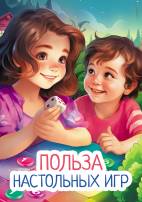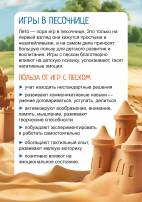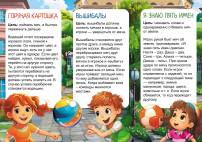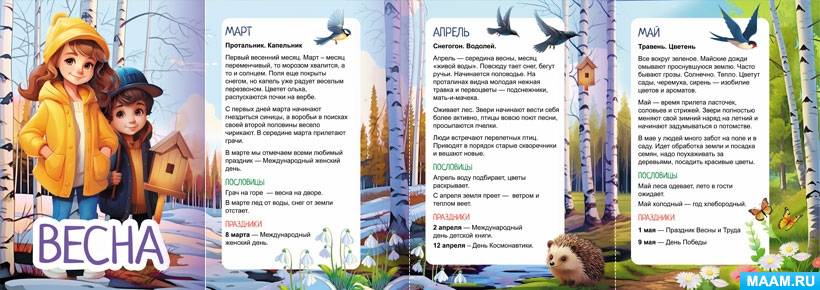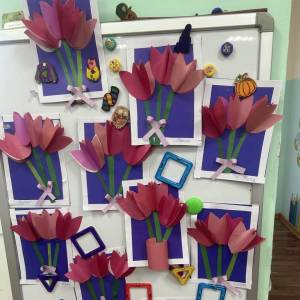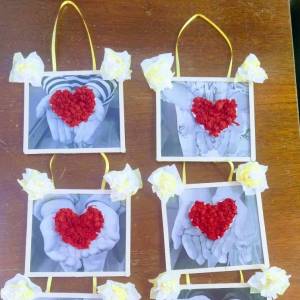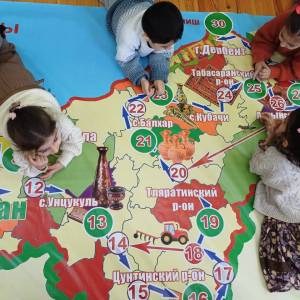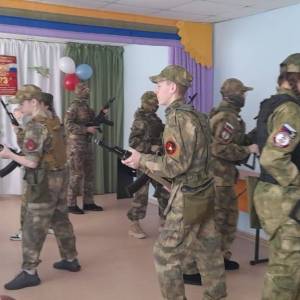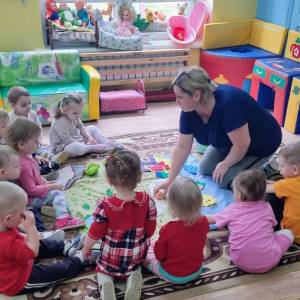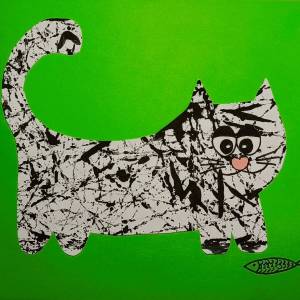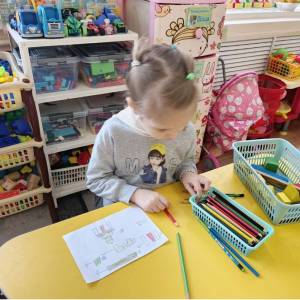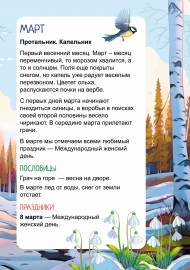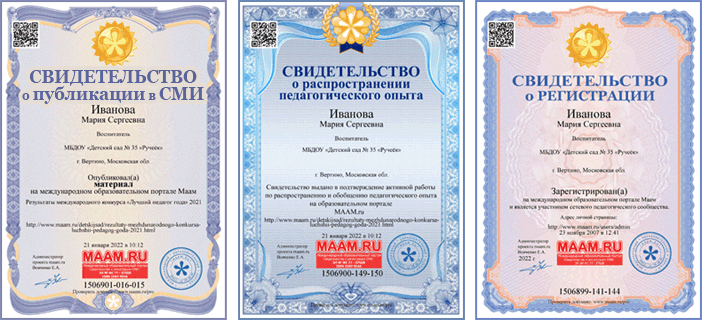![]() Ольга Ботнева
Ольга Ботнева
Банк игр на английском языке в ДОУ
▼ Скачать + Заказать документы
В настоящем материале собраны игры на английском языке для детей среднего и старшего возраста.
Основные технологии обучения дошкольников основываются на гармоничном сочетании 3-х методик преподавания:
1. игровой,
2. коммуникативной,
3. методики полного включения всего организма (total physical involvement).
Темочки:
- Английский язык для дошкольников
- Банк. Знакомство с банком и работниками
- Модель трёх вопросов. Образовательная технология
- Финансовая грамотность, деньги. Экономическое воспитание
- Темочки
- Конкурс для воспитателей и педагогов «Лучшая методическая разработка» январь 2017
На протяжении всего обучения сохраняется единство форм и видов работ, при этом доминируют наглядность и образность, так как фраза воспринимается ребенком не как набор отдельных лексических единиц, а как блок, нечто единое, целое, образ.
Данная программа предназначена для обучения детей 4–5 лет и учитывает особенности их психологического и физического развития. Возраст от 4 до 5 лет получил название возраста “почемучек”. Дети старше 4 лет способны мысленно представлять себе то, что они никогда не видели. Они любят слушать рассказы взрослых и задают множество вопросов. Мышление делает качественный скачок: ребенок выходит за пределы статичного бытия и начинает жить в протяженном во времени мире. Это позволяет перейти к поиску закономерностей, лежащих в основе устройства мира. Он начинает интересоваться процессами как упорядоченными системами событий. В связи с этим в обучение необходимо включать элементы закономерностей языкового строя. При этом 1) не отходить ни на йоту от основного принципа наглядности и образности; 2) руководствоваться принципом “делай, как я”, “говори, как я”; 3) учить языку исключительно на практике, без применения даже элементарных теоретических языковых понятий (teacher centered method).
Принципы работы
1. Обязательно использовать различные средства поощрения, как вербальные, так и материальные.
2. Формировать у детей положительный образ учителя, что повышает рефлексивные способности ребенка.
3. Лимитировать речь учителя на русском языке до 5–10%. (Речь ребенка на английском языке – 90%).
4. Системно вводить лексику:
• Первое занятие – 3 слова.
• Второе занятие – закрепление.
• Последующие занятия – активизация с использованием речевых конструкций + 3–4 новых слова.
5. Учитывать кратковременную память детей на данном этапе развития, системно возвращаться к ранее пройденному материалу и включать его в последующие занятия.
6. Обучать полным речевым структурам, что способствует развитию навыков говорения.
7. Отдавать преимущественное предпочтение парному и групповому обучению. Это помогает установить благоприятный психологический климат в группе и снимает языковые барьеры.
8. Развивать быстроту реакции на команды и вопросы учителя.
Classrom Games.
1) Morning-Evening
In the morning we wake up
In the evening we go to bed, we sleep
(picture morning-evening turning fast + gestures “wake up-sleep”)
Or
When the teacher says “Good morning” everybody runs about the classroom. “Good evening” – everybody goes very slowly.
2) Pick up a toy
Eyes closed draw a toy from the bag and say what it is.
3) Find me a …
Eyes closed try to find the toy which was mentioned by the teacher (other kids)
4) Look! What’s this?
Slowly draw a toy/picture from the bag until the kids guess what it is.
5) Crocodile
Pick up a picture, show the animal (gestures, sounds, other kids guess what it is.
6) Where is the bear?
The toys are around the class. The teacher asks to bring them and put in the right box (red, green, yellow, blue)
Where is the bear? – It’s on the table/shelf/chair/box/floor. In the box/bag/house. Under the box/chair/table/book. By the box/bag/book.
7) Warming up “Hands up”
The teacher says, the kids repeat and show.
Or
The teacher says and shows different tasks. The kids have to show the correct variant.
8) Family fingers
Song “I have a mother…” Draw faces on the fingers. Sing the song and play a finger game.
9) Family members
Who do you like best? Put a small heart on the picture that you like.
10) What’s your name – read line by line
“What’s your name” song is read like a poem line by line by every other kid.
11) What does the pig say?
Make the sound, the kids guess what animal it is.
Or
Say the animal, kids make the sound.
12) Fishing
Two teams. The guest : catch a red/yellow/blue/green fish for me. The teams do the task with a time limit.
13) What’s missing?
Put some toys/pictures on the table, name them with the kids. The kids close their eyes. The teacher hides 2 toys. The kids open their eyes and say what is missing.
14) What’s there on the table?
Put some toys/pictures on the table, name them with the kids. Cover them with a shawl/blanket. The kids in turn say what’s under the shawl.
15) Let’s make some bouquets.
Hand out the flowers in different colours. The kids make bouquets and then say which colours they have.
Or
Draw different bouquets and say what you (kids) have.
16) How many toys are there on the table?
Is it 1? – No. Is it 2? – No. Is it many? – Yes.
17) Is it a?
The kid points at the toy. The teacher tries to guess what it is. Other kids say No/Yes.
18) This is not a …
There are 4-5 toys on the table. Kids, Guess what I’m thinking about.
This is not a… not a … not a … What is it?
The kids guess.
19) The mouse fairy tale
Tell kids a fairy tale. The mouse has never seen a cat but was always afraid of it. Once he met a frog. Oh, it’s a cat. Kids, is it a cat? – No, this is not a cat. This is a frog.
Then he met a dog/fox/wolf/hare, etc.
(about a cat) Oh, this is not a cat!
Kids : this is a cat! Run!
The cat is crying. I’m a good cat, I’m not bad. Let’s be friends.
20) Tricky shop assistant
He didn’t want to sell the cat. He turned off the light in his shop and told the customers that it was cat (giving them another toy)
K : Can I have a cat, please?
SH A : Here is it. This is a cat.
(Is it a cat)
K : No, this is not a cat. This is a …
21) Yes, it is. – No, it isn’t.
This is a bag. What’s there in the bag? The teacher draws a toy from the bag/box with eyes closed and tries to guess what it is. The kids say Yes/No.
22) Shops
Can I have a … please?
Here it is.
Thank you. How much is it?
It is 2/3/6/10 claps/stump your feet/spin around/hands up/close your eyes/sit down on the floor/hop/steps back-forward.
Thank you!
23) I don’t have a…
The same game as “This is not a …”
There are 4-5 toys on the table. Kids, Guess what I’m thinking about.
I don’t have a… not a … not a … What is it?
The kids guess.
Warming ups
I wiggle, wiggle, wiggle my fingers,
I wiggle, wiggle, wiggle my toes,
I wiggle, wiggle, wiggle my shoulders,
I wiggle, wiggle, wiggle my nose.
No more wiggles are left in me,
So I will be as still as I can be.
Dance your fingers up,
Dance your fingers down,
Dance your fingers to the side,
Dance them all around
Dance them on your shoulders,
Dance them on your head,
Dance them on your tummy,
And put them all to bed.
Head, shoulders, knees and toes
Knees and toes.
Head, shoulders, knees and toes
Knees and toes.
And eyes and ears
And mouth and nose.
Head, shoulders, knees and toes
Knees and toes.
(Snails- go faster-go much faster)
Where is the ceiling?
Here is the ceiling
Where is the floor?
Here is the floor.
Where is the window?
Here is the window (and here is the window)
Where is the wall?
Here is the wall (and here is the wall)
Where is the door?
Here is the door. (and here is the door)
Faster : ceiling-floor-window-wall-door (+point fast)
Hands up
Hands down
Hands on knees
Sit down
Clap your hands
Stand up
Stump your feet
Hands up
1-2-3 hop
1-2-3 stop
Sleep, sleep, sleep, sleep, sleep
Walk, walk, walk, walk
Run, run, run, run, run
And now let’s hop, hop, hop
Stand, stand, stand, stand, stand
Swim, swim, swim, swim
Fly, fly, fly, fly, fly
And now let’s stop, stop, stop.
Red at the top
Tells us to stop
The green below
Tells us to go
The yellow in the middle tells us to wait :
Please, do not worry,
You won’t be late!
(светофор, разноцветные машинки, полицейский следит за порядком, едут быстро или медленно)

